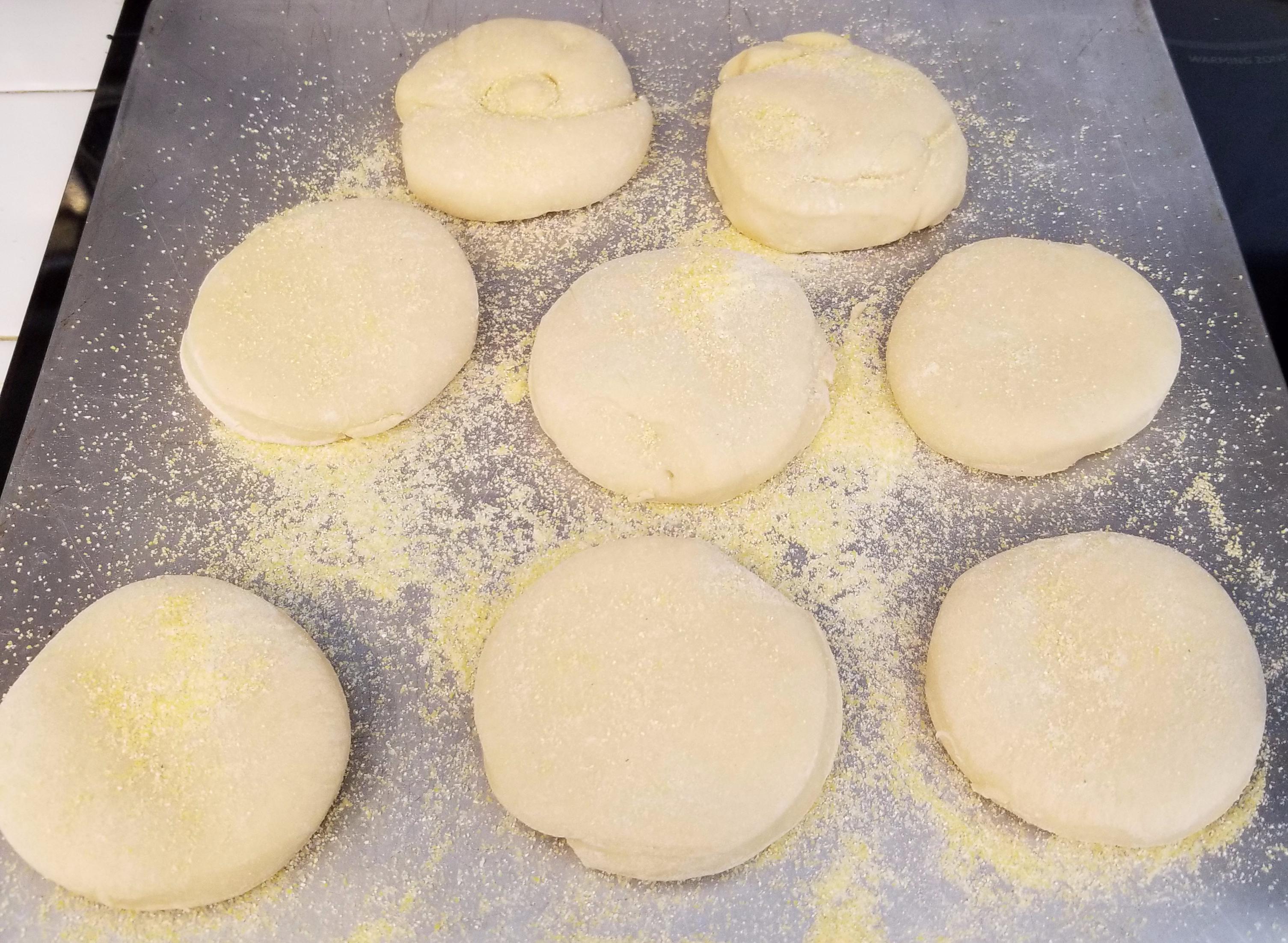I may never go back.
I’d never made English muffins before. I’d never even tasted a homemade English muffin before. I had no idea how yummy they are! There really is no comparison to the flat, dry, almost tasteless English muffins you find in the refrigerator section of the grocery store. These are tender, light and chewy, with multitudes of those “nooks and crannies” which that brand-name English muffin always promises.
You are watching: English Muffins
And why not? It’s Paul Hollywood’s recipe, after all, because this was the technical challenge for bread week in the Great White Tent. Paul and Mary were looking for a chewy texture with a soft crumb, light air holes and an even bake.
While English muffins are fairly simple to make, they do take time. The key to a good flavor and lots of little holes inside is a long, slow rise. Some recipes call for letting the dough rise in the refrigerator for up to four days, especially if you like that sourdough flavor. Even Paul says, in the Masterclass episode (season 2, episode 1 on Netflix) of The Great British Bake Off where he demonstrates his English muffin recipe, “The flavor comes from the proving of the dough itself.”
Read more : Are Recipes and Cookbooks Protected by Copyright?
It begins with an enriched dough, which starts out sticky, but once it’s been kneaded for awhile becomes smooth and silky. Then it’s allowed to rise before being rolled out and cut into inch-thick circles. After that, the muffins are proved again before being baked on a griddle or heavy frying pan till browned on both sides.
The main difficulty I had was in getting eight muffins out of the dough. I used a 3.5-inch-diameter cutter like the recipe stipulated, but I must have rolled my dough too thick, so I rerolled it and used a slightly smaller cutter, but that meant that not all of my muffins were nice and smooth. When I make these again (and I plan to), I think I’ll use my normal-sized biscuit cutter, which is 2.5 inches in diameter.
-

They weren’t all nice and smooth. -

But they puffed up nicely in the frying pan. -

And turned out perfectly golden on both sides.
Unlike most yeast breads, English muffins are “baked” on the stove, usually on a hot griddle or cast iron frying pan. This makes them nice and toasty on each side, but still slightly squidgy in the middle. After they have cooled, it’s important, in order to maintain the honeycomb of holes in the middle, that they are broken open instead of sliced. Piercing the muffin all the way around with a fork can help, or you can invest in an actual English muffin splitter.

Rewriting the History of English Muffins
Despite a rumor promulgated by the Thomas’ brand, English muffins were NOT invented in 1880 by Samuel Bath Thomas, an English expat in New York who called his yeasted muffins “toaster crumpets.” Indeed, the classic nursery rhyme, “The Muffin Man,” dates back to at least 1820, a time when many households in England had their fresh foods delivered, thus the “muffin man” in question would have hawked his wares from door to door.
Read more : How To Make DIY Shaving & Body Oil
The earliest recipe for a muffin similar to what we now call English muffins is found in a cookbook that was first published in 1747 — The Art of Cookery, Made Plain and Easy by Hannah Glasse. And it makes sense, since this was a simple type of bread that could be cooked on a flat surface over any heat source, at a time when many homes didn’t yet have proper ovens. According to The BS Historian: “They were a staple snack food that transcended class, being a high-calorie working class convenience food sold in the street that became a dainty teatime treat for the well-to-do.
And I, for one, plan to make these a staple in my baking repertoire.


Here’s a link to Paul’s recipe, but I’ve adapted it for American bakers below.
Next week: A Decorative Loaf
Source: https://gardencourte.com
Categories: Recipe


